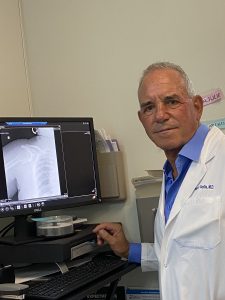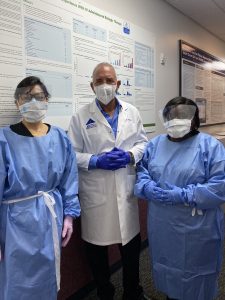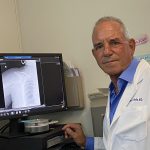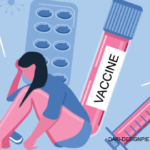As people in the U.S. struggle with increasing cases of COVID-19, the economic toll of the virus is growing, too. Community rheumatology practices are confronting significant financial fallout from stay-at-home orders and fears that keep patients at home, according to Norman Gaylis, MD, a community rheumatologist in Aventura, Fla.

Dr. Norman Gaylis
Dr. Gaylis started his private practice in 1982. The multi-faceted practice today includes three providers and 32 staff members to whom patients come for rheumatology care, infusion therapy, imaging (X-rays, bone density tests, MRIs), and physical therapy and rehab. Dr. Gaylis spoke with The Rheumatologist about the personal and business decisions he’s had to consider in the months since the novel coronavirus changed the world.
Q: What has been the evolution of COVID-19’s financial impacts on community rheumatology practices?
The actual onset of the COVID-19 epidemic has been like a perfect storm for the fiscal health of most community practices. Initially there was a slow-down effect, and then we started to see a progressive and significant reduction in the number of patients coming into our practice. We ended up being closed for two weeks in April when we just did telemedicine. When we reopened, for the next month we probably saw only 25% of our normal patient population. Not only were we seeing fewer patients, but insurance companies dramatically reduced reimbursements to us for services that we had previously rendered. Effectively, for most practices, this combination created a very tight scenario.
In the return to normal, patients are still apprehensive to come to the office, and they’re even more reluctant given the new surge of COVID-19 cases in Florida and around the country. We’re going backward and noticing that patients are reluctant to visit the office, even though they know it’s relatively safe. Financially, it will be catastrophic if we have to shut the practice down again. We may need more relief down the road if that does happen.
Q: Has there been any relief?
Most of our vendors were understanding and were willing to delay their monthly payments, and our landlord was prepared to give us an abatement. We also had a number of different grants, loans and stimulus monies that, without a doubt, allowed us to keep this practice functioning. These included the Payroll Protection Program, a grant from HHS [the Department of Health and Human Services] and a prospective plan from Medicare.

Dr. Gaylis and staff in his practice in Aventura, Fla.
Q: How has this shifting situation affected you and your staff?
It’s extremely stressful. It was very emotional and difficult to talk to staff about potentially having to take less salary or lose their jobs. So there was this insecurity, the stress of what could happen financially. Then there was the stress of potentially becoming exposed to COVID by being at work. I was extremely transparent with my staff about the business, and to this very moment everybody has really stayed positive and worked together as a team. I’m very proud of them. The continued stress and insecurity are taking their toll on the well-being of all of us working in the office.
Q: What pandemic-related factors are contributing to ongoing financial stress for community physicians?
When we opened back up after the two-week shutdown, the practice didn’t bounce back by any means. We’re seeing fewer patients, probably about 60–70% of our normal patient flow, and our costs have gone up between coronavirus antibody testing and increased use of personal protective equipment.
Q: What do you see for the future?
As we look forward, if this pandemic continues, we will have to look at our business model and how we might do things differently. We are not going to be able to continue to sustain the practice the way it is at the moment. Community practices are really threatened and may have to shut down without financial resources. This is going to be a catalyst to reduce community health care dramatically, which is a tremendous loss for many reasons. Obviously, we fill a tremendous need for the community.
Q: What solutions, if any, do you see for helping rheumatology practices return to normal?
Number one, we’ve got to get past this pandemic. Until then, we are going to have a tremendous problem with our current business model. Unless we get help and unless we reduce overhead, we may not be able to stay viable.
Beginning July 1, our stimulus money was gone. Since then, we’ve asked each staff person to take one personal day off each week for three months. That alone will save 20% on payroll. Maybe there will be more virtual medicine practice, so you can reduce some of your space needs by doing home visits, telemedicine and so on.
We need to harness all of our resources to get through this. We recognize that this isn’t going to be the best year of our lives, but if we can hold on, maybe we’ll be in decent shape when this thing turns around.
Kimberly J. Retzlaff is a freelance medical journalist based in Denver.



